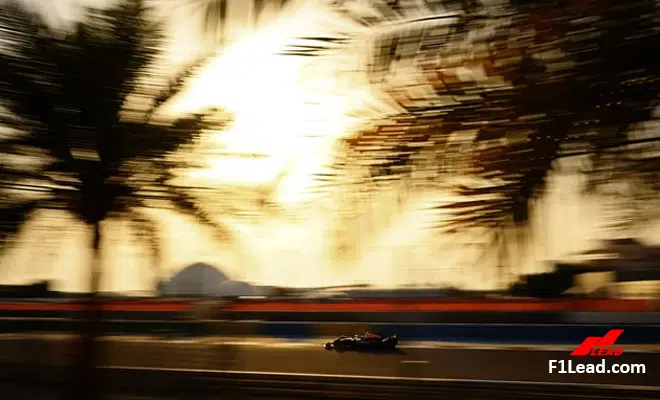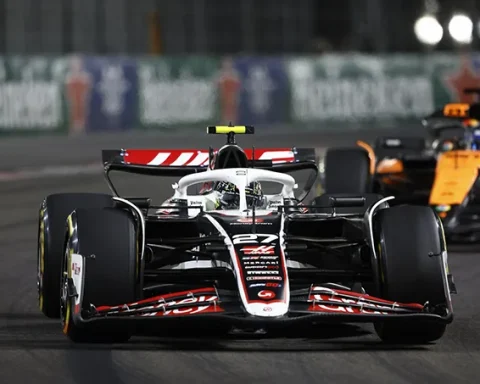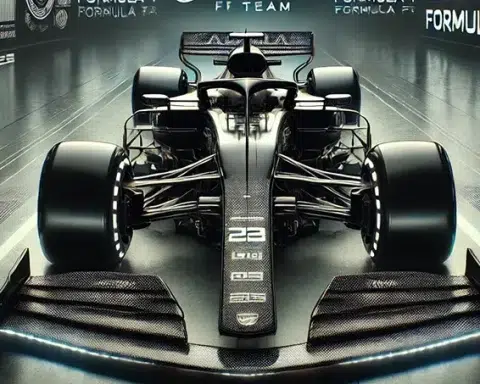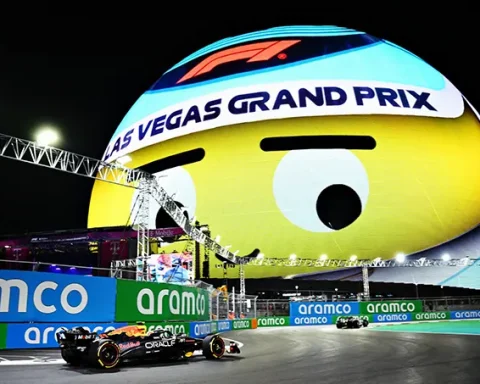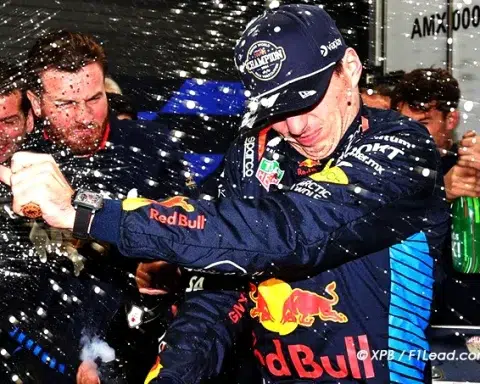Following three days of intensive testing in Bahrain, the Formula 1 paddock has had a chance to witness the initial performances of the 2024 season’s cars. These critical sessions offer a glimpse into the progress and challenges faced by the teams, though the true hierarchy will only be unveiled at the opening Grand Prix. However, a preliminary analysis provides an early assessment of the forces at play.
Red Bull Racing appears to set the standard high again, with a car that looks both fast and reliable. The Austrian team, reigning champions, confirms its status as the favorite for the upcoming season. Ferrari, on the other hand, displays promising signs, with a car that seems to have improved in performance and tire management, crucial aspects for competitiveness over a Grand Prix distance.
Mercedes, in its perpetual quest for perfection, seems to be closing in on the leaders, though questions remain about its ability to challenge Red Bull throughout the season. McLaren and Aston Martin continue to make strides, with performances that could see them regularly disrupting the frontrunners.
Alpine, finishing eighth in these tests, shows resilience despite moderate expectations. The French team, which introduced a new platform this year, remains optimistic about its developmental potential throughout the season.
Underestimated Teams: Potential Surprises Await
RB, Williams, Sauber, and Haas, while more discreet during these tests, should not be underestimated. Each team is working tirelessly to overcome its specific challenges, and surprises could well emerge during the season.
In summary, the Bahrain tests have unveiled some trends, but the competition is far from settled. Formula 1 is a world where innovation and adaptation are key. Teams will continue to refine their machines in the coming weeks, hoping to defy predictions and make their mark on circuits around the globe.
At the end of the third day of pre-season testing, a competitive hierarchy begins to emerge, albeit slightly altered from initial expectations. This order, assessed on overall performance rather than merely quick laps, remains tentative, with several teams still presenting performances difficult to interpret with certainty.
| Rank | Team |
|---|---|
| 1 | Red Bull |
| 2 | Ferrari |
| 3 | McLaren |
| 4 | Aston |
| 5 | Mercedes |
| 6 | RB |
| 7 | Williams |
| 8 | Alpine |
| 9 | Sauber |
| 10 | Haas |
Red Bull Dominance, Ferrari’s Close Pursuit
Red Bull Racing, under the banner of its technical ingenuity, appears once again to position itself as the dominant force, a scenario hardly surprising given its flawless performance over recent seasons. However, the gap separating Red Bull from its closest rivals, notably Ferrari, may well be smaller than initially feared. Race simulation analyses suggest that Ferrari is not far behind, with a gap that could be less than three to five-tenths of a second, instead of the whole second some had dreaded.
Ferrari, with its notable improvements in tire durability, seems to be on the right track to solidify its position as a serious contender for podiums, if not victories. While the prospect of a radical upgrade from Red Bull in Japan – with rumors of a “zero-pod” concept – might cast a shadow over Ferrari’s progress, optimism remains.
McLaren and Aston: Pre-Season Challenges Ahead
The discussion on pre-season performance would not be complete without mentioning the untapped potential of McLaren and Aston Martin. Despite high expectations, their progress appears to have been more moderate than anticipated, leaving fans and analysts waiting to see if these teams can truly close the gap to the leaders.
In this fiercely competitive context, the dynamics between teams and drivers promise an enthralling season. The focus on technical improvements, adaptation to tires, and race strategies could well redefine the hierarchical order within the paddock.
As rumors and speculations continue to swirl, one thing remains certain: the true measure of competitiveness will only be revealed when the lights go out at the first Grand Prix. Until then, each team continues to refine its arsenal in hopes of dethroning Red Bull, or at least, significantly narrowing the gap to victory.
Number of Laps Completed During Pre-Season Testing.
| Rank | Team | Laps Completed |
|---|---|---|
| 1 | Haas | 441 |
| 2 | Ferrari | 416 |
| 3 | Red Bull | 391 |
| 4=. | Sauber | 379 |
| 4=. | Aston Martin | 379 |
| 6 | RB | 367 |
| 7 | Mercedes | 361 |
| 8 | Alpine | 334 |
| 9 | McLaren | 328 |
| 10 | Williams | 299 |
Ferrari Dominance: Key Insights from Pre-Season
This year’s pre-season testing has unveiled some intriguing trends, particularly the remarkable overall reliability of Ferrari-powered cars, which dominated the top positions during the tests.
Three cars equipped with Ferrari engines secured spots in the top four, a feat that underscores not only the power but also the reliability of the Italian power unit. This outcome is particularly encouraging for the Ferrari team, which aims to contend for the championship this season.
The Haas team, also powered by Ferrari, impressed by covering nearly eight times the distance of a Grand Prix during testing. However, despite this achievement, doubts persist regarding their ability to maintain a competitive pace over long stints. Kevin Magnussen suggested that despite improvements, tire wear remains a challenge for the team.
Challenges and Progress: F1 Pre-Season Insights
Meanwhile, Williams experienced three challenging days marked by various technical issues. This raises concerns about their ability to overcome these obstacles before the start of the season. However, comparing their performance to previous tests shows an improvement in mileage, indicating progress in resolving their reliability issues.
Mercedes, another major player in F1, appears to have encountered difficulties, with fewer laps completed compared to Ferrari and Red Bull. Technical problems encountered on Friday morning limited their track time, prompting them to focus on shorter runs to maximize their testing program.
This year’s Formula 1 pre-season tests have provided a promising glimpse into the competitiveness of the teams, with a special mention for the reliability of Ferrari engines. However, the challenges faced by certain teams like Williams and Haas underscore the crucial importance of preparation and optimization before the start of the season. Formula 1 remains a sport where performance and reliability must go hand in hand to hope for success.
Bahrain Pre-Season Tests : Competitive Order Analysis. Bahrain Pre-Season Tests : Competitive Order Analysis. F1 2024 Bahrain Pre-Season Tests : Competitive Order Analysis. formula 1 2024 Bahrain Pre-Season Tests : Competitive Order Analysis
- Alonso Praises Progress but Uncertain About Car’s Standing
- Following us on Facebook and Twitter.
